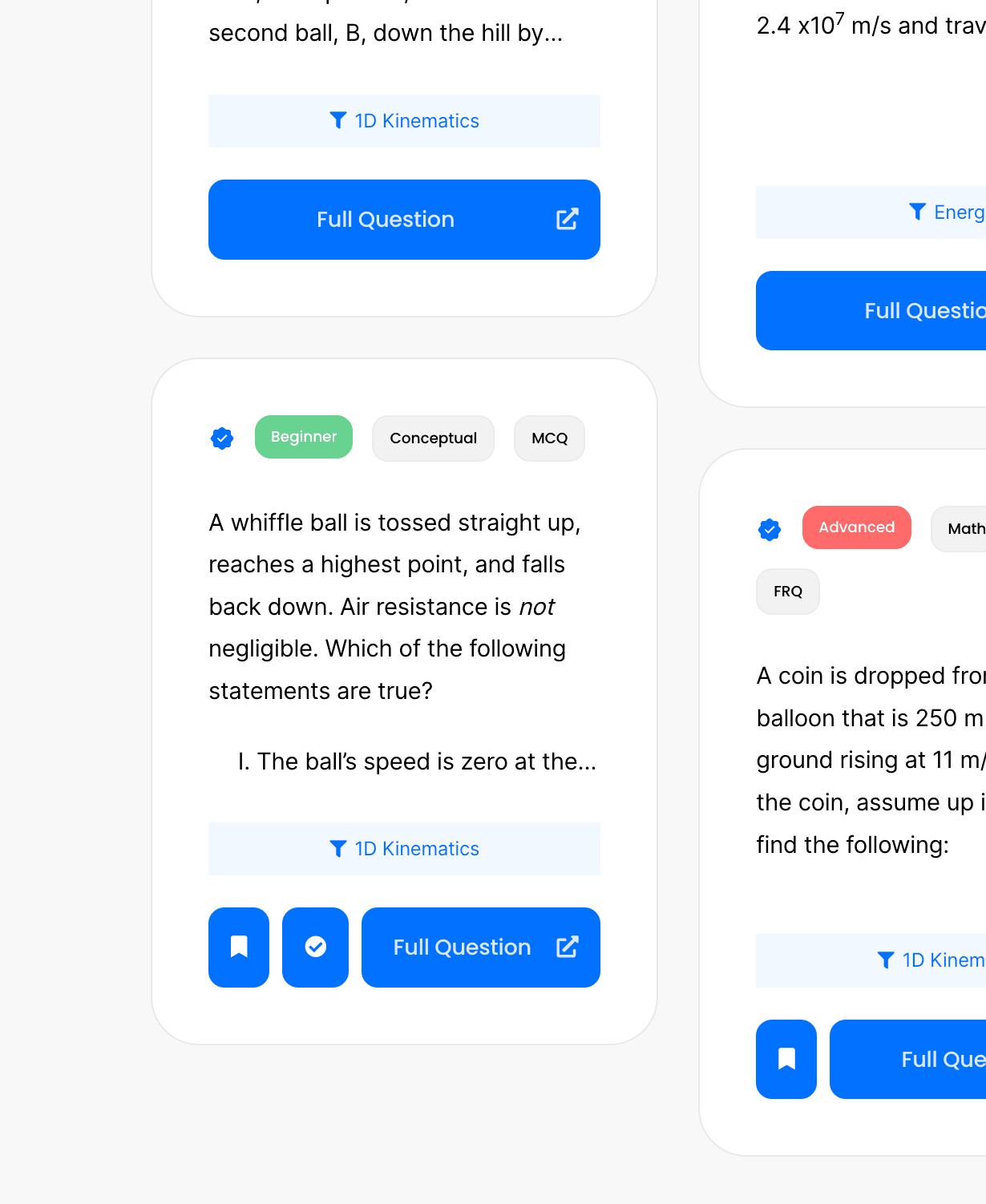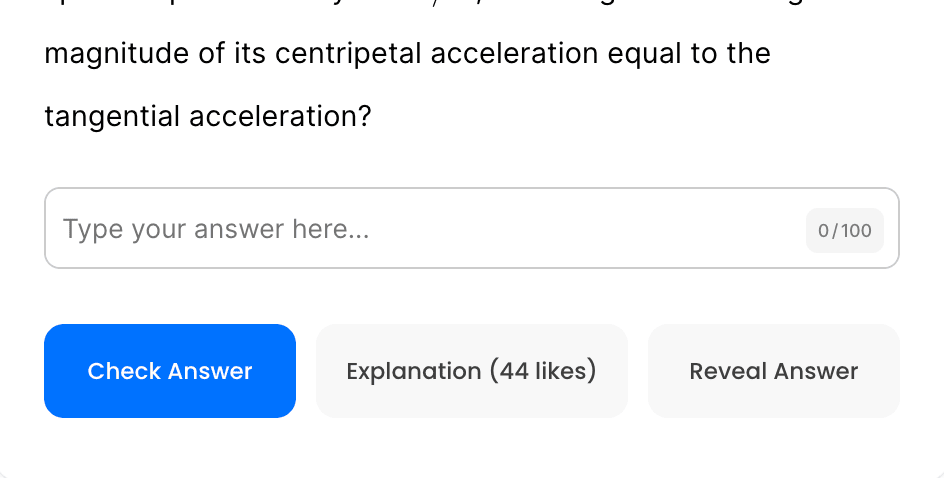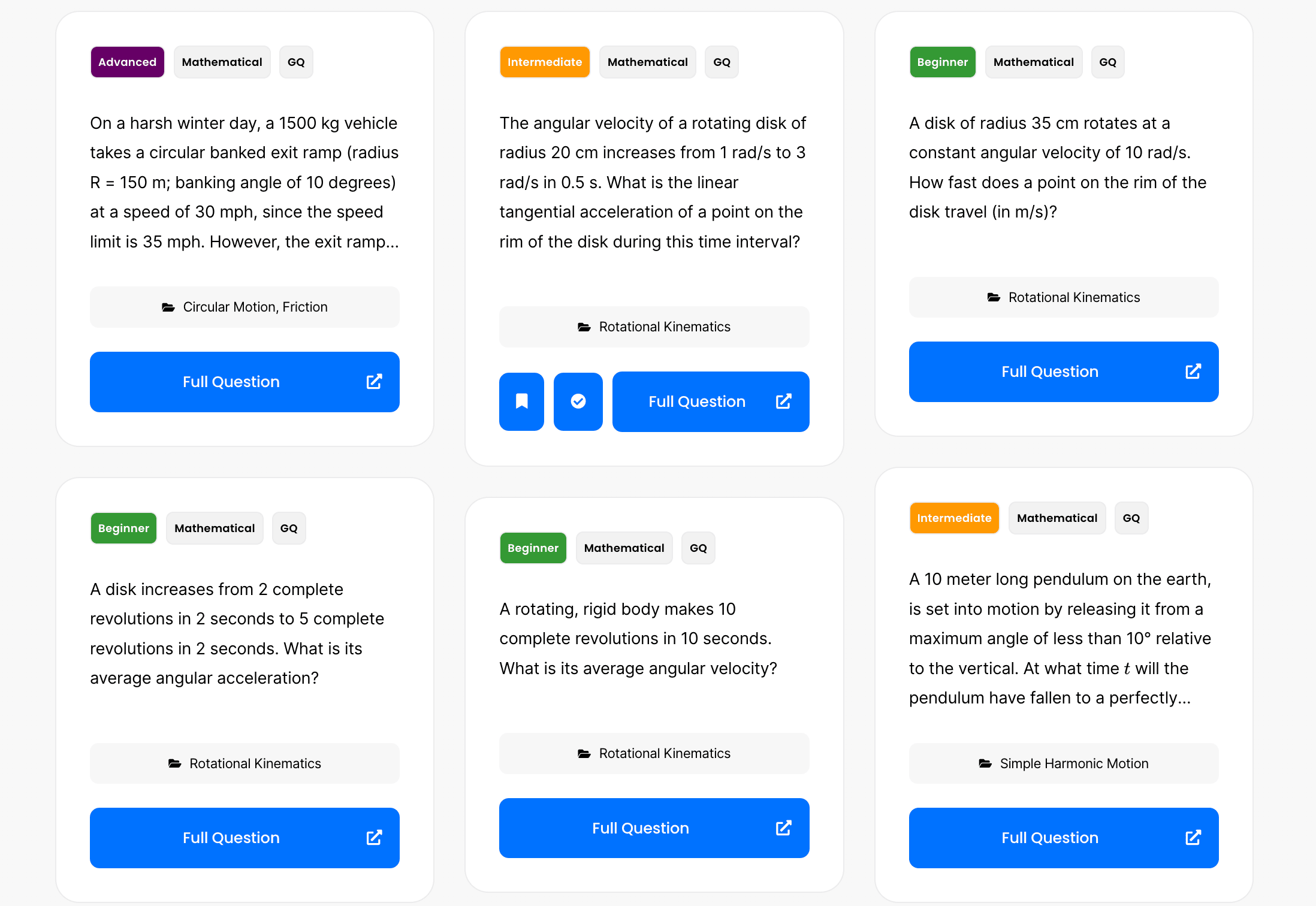A ball is shot from the top of a building with an initial velocity of \( 18 \) \( \text{m/s} \) at an angle \( \theta = 42^\circ \) above the horizontal.
A \(4.0 \, \text{kg}\) block is moving at \(5.0 \, \text{m/s}\) along a horizontal frictionless surface toward an ideal spring that is attached to a wall. After the block collides with the spring, the spring is compressed a maximum distance of \(0.68 \, \text{m}\). What is the speed of the block when the spring is compressed to only one-half of the maximum distance?

What is the net torque acting on the pivot supporting a 10-kilogram beam 2 meters long as shown above? Assume that the positive direction is clockwise.
The maximum acceleration a pilot can withstand without blacking out is about \( 7.0 \) \( g \). In an endurance test for a jet plane’s pilot, what is the maximum speed he can tolerate if he is spun in a horizontal circle of diameter \( 85 \) \( \text{m} \)?
A rubber ball and a piece of clay have equal masses. They are dropped from the same height on horizontal steel platform. The ball bounces back with nearly the same speed with which it hit. The clay sticks to the platform. Choose all that is true about the ball/platform and the clay/platform systems.
A coin is dropped from a hot air-balloon that is 250 m above the ground rising at 11 m/s upwards. For the coin, assume up is positive and find the following:
Determine the distance from the Earth’s center to a point outside the Earth where the gravitational acceleration due to the Earth is \( \dfrac{1}{10} \) of its value at the Earth’s surface.
A small boat coasts at constant speed under a bridge. A heavy sack of sand is dropped from the bridge onto the boat. The speed of the boat will
A person is standing at the edge of the water and looking out at the ocean. The height of the person’s eyes above the water is \( h = 1.8 \, \text{m} \), and the radius of the Earth is \( R = 6.38 \times 10^6 \, \text{m} \). How far is it to the horizon (in meters)? In other words, find the distance \( d \) from the person’s eyes to the horizon. Note at the horizon, the angle between the line of sight and the radius of the Earth is \( 90^\circ \).)
A blue ball is thrown upward with a velocity of \( 9 \) \( \text{m/s} \) upward from the top of a high cliff. At the same time, a red ball is dropped from the same spot. The red ball is observed to hit the ground below exactly \( 1 \) \( \text{s} \) before the blue ball. How high is the cliff?
A block with mass m slides at speed [katex] v_0 [/katex] on a smooth surface and hits a stationary block with mass [katex] M [/katex] . They stick together and move at speed [katex] v_0/3 [/katex]. Find [katex] M [/katex] in terms of [katex] m [/katex] .
Two closed containers look the same, but one is packed with lead and the other with a few feathers. How could you determine which has more mass if you and the containers were orbiting in a weightless condition in outer space?
By continuing you (1) agree to our Terms of Use and Terms of Sale and (2) consent to sharing your IP and browser information used by this site’s security protocols as outlined in our Privacy Policy.
Quick Start Guide
AP physics 1, AP C, honors and advanced physics students.
Quickly filter questions by units and more.


Here’s guide to using 5 UBQ filters.
GQ = general question, MCQ = multiple choice, FRQ = free response.


Click the check or bookmark button.
Now you’ll be able to see completed or bookmarked questions at a glance!
Answer keys, personalized for you.

Phy will be responsible for grading your FRQs and GQs.
No more copy and pasting. Just solve and snap.
Questions for Mastery

By continuing you agree to nerd-notes.com Terms of Service, Privacy Policy, and our usage of user data.